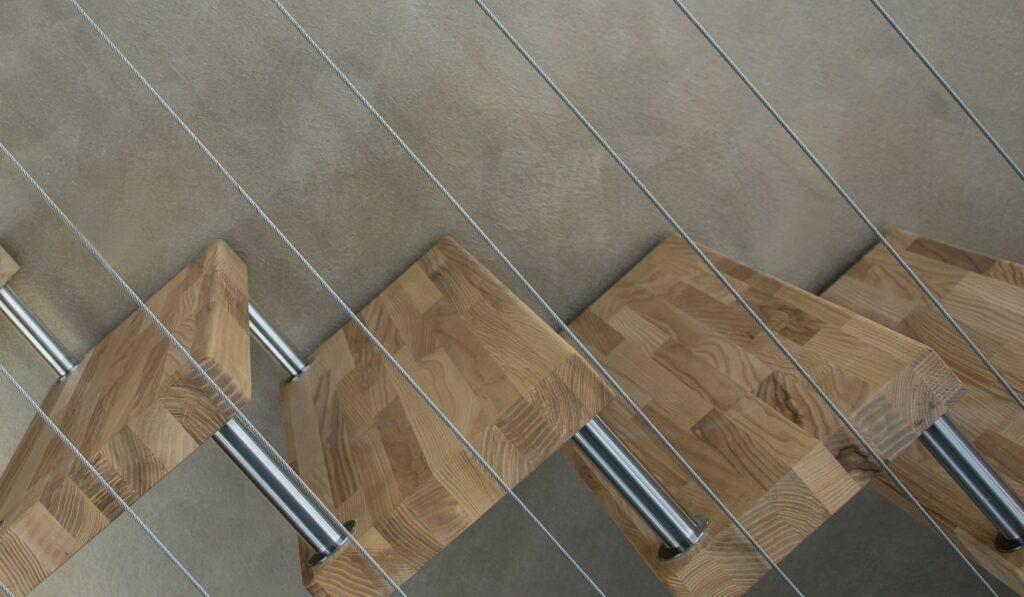
Architectural cables housed in wood frames come together in a modern and unique way. It’s sure to look spectacular in your home or commercial setting too!
Cable railings are an excellent, unique, and exciting alternative to traditional railings for your home or business. Architectural cables serve the same purpose as conventional metal railings in terms of safety, but they are much more visually appealing. When you combine architectural cables, which lend an almost industrial vibe, with the warmth and timelessness of wood for the frames, the result is stunning and modern. Read on for more information about this unique style choice before you make your final decision on your new architectural cables and wood frame design.
Benefits of Wood Frames
Take advantage of the benefits of steel cables without some of the drawbacks of a metal frame. Wood offers many benefits in any application, and framing for architectural cables is no exception. Wood is often easier to obtain, costs less, and is easier to work with than metal options. It offers warmth and character that metal framing can sometimes lack as well. Metal framing can also get very hot or very cold, depending on ambient conditions, making your railings uncomfortable to touch. This is especially true if the railings are in direct sunlight, which could pose a legitimate safety issue. Wood doesn’t have this issue at all. Finally, there are many different wood tones and patterns available in the various wood varieties on the market, so there is sure to be something to match your personal or brand aesthetic. Architectural cables by design are often minimal. Bringing wood frames and steel cables together for your handrails and guardrails perfectly juxtaposes the material and composition.
Safety Considerations
Architectural cables and wooden frames can be just as safe as traditional railings, but there are some things you need to be aware of. First, the frame has to be very strong and rigid, since it has to withstand 2000 to 3000 pounds of tension easily. A frame that is not strong enough will bow or even break under the immense pressure. The top rail and all of the posts also must be very securely attached to each other, and the posts must not be too far apart. A maximum of three feet spacing is a good rule for this type of railing. Finally, the spacing of the wires is also an important consideration. According to code, pickets, or in this case the architectural cables, must be close enough that a 4-inch sphere cannot pass between them. With pickets, this means a 3 to 3.5-inch spacing is fine. Architectural cables, however, have some give and can often deflect by as much as a half an inch. This means that the cables cannot be any further apart than 3 inches, and even that has the possibility of not meeting code.
HAVE QUESTIONS? ASK HERCULES CUSTOM IRON
If you are ready to install your massive duty iron fence and add iron railings or you still have some more questions, we here at Hercules Custom Iron are here to help. We have many years of experience and will ensure that your chain link fence will serve you and your family for years. Visit us online or call us at 1-800-331-2590. For advice, updates, and to see what we are up to, be sure to follow us on social media on Facebook, Twitter, LinkedIn, YouTube, and Pinterest.


